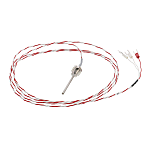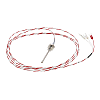(!) Since support from Microsoft will end on January 14th, 2020, Windows 7 will be excluded from the recommended environment from December 15th, 2019 on this site. Vì lý do Microsoft kết thúc hỗ trợ cho Windows 7 vào ngày 14/01/2020, Windows 7 sẽ là hệ điều hành không được khuyến khích sử dụng với trang web này từ ngày 15/12/2019.
Search by Category / Brand Tìm theo danh mục, nhãn hiệu
Search by Category Tìm theo danh mục
- [Thông báo] Cập nhật địa chỉ kho tập kết hàng hóa tại khu vực miền Nam của MISUMI Việt Nam. Xem chi tiết.
[Announcement] Update on warehouse address in the Southern region of MISUIMI Vietnam. See more. - [Cảnh Báo] Thủ Đoạn Lừa Đảo Từ Nhân Viên Giao Hàng – Yêu Cầu Trả Phí Ship. Xem chi tiết.
[Warning] Fraud Calling from Shipper - Asking to Pay Shipping Fee. See more.
MISUMI Standard Sheath Type(Attaching Portion Shape:Tapered Thread (R1/8))
Brand |
|
|---|---|
| CAD |
|
| Days to Ship |
|
1 itemsMặt hàng
- Sort By
-
You can add up to 6 items per a category to the compare list.



Temperature Sensors/Taper Thread/K-Thermocouple/Temperature-Resistor
MISUMI
Temperature Sensors/Taper Thread/K-Thermocouple/Temperature-Resistor These Temperature Sensors Taper Thread type are commonly used in manufacturing and automation machine[Feature] ● Temperature Sensors : Thermocouple Type K● Sheath Outside Diameter (mm.) : 3.2 ● Protection Tube Length (mm.): 65 ● Temperature Range (°C) : TCKT and TCKTF - 0 to 250 TCPT and TCPTF - -50 to 250 ● Material : Protection Tube and Taper Screw- SUS304 [Application] It is used in a variety of application such as heat treatment, packaging industry , plastic industry , and so on.
- Volume Discount
Type Thermocouple Type Probe Dia. d(Ø) Sheath, Protecting Tube Shape Lead Wire Protection, L Selection(mm) Operating Environment Sheath, Protecting Tube Material Thermocouple Structure Number of Elements Attaching Portion Shape Thermocouple / Temperature Measuring Resistor K 3.2 Straight 65 Standard Stainless Steel Isolated Neutral Type 1 Tapered Thread (R1/8) Days to Ship: Số ngày giao hàng: Same day or more  Same day or more
Same day or more
| BrandNhãn hiệu |
|---|
| Product SeriesDòng sản phẩm |
| CADCAD |
| From |
| Days to ShipSố ngày giao hàng |
| Type |
| Thermocouple Type |
| Probe Dia. d(Ø) |
| Sheath, Protecting Tube Shape |
| Lead Wire Protection, L Selection(mm) |
| Operating Environment |
| Sheath, Protecting Tube Material |
| Thermocouple Structure |
| Number of Elements |
| Attaching Portion Shape |
You can add up to 6 items per a category to the compare list. | |
| BrandNhãn hiệu | MISUMI |
| Product SeriesDòng sản phẩm | Temperature Sensors/Taper Thread/K-Thermocouple/Temperature-Resistor |
| CADCAD |
|
| From | - |
| Days to ShipSố ngày giao hàng | Same day or more |
| Type | Thermocouple / Temperature Measuring Resistor |
| Thermocouple Type | K |
| Probe Dia. d(Ø) | 3.2 |
| Sheath, Protecting Tube Shape | Straight |
| Lead Wire Protection, L Selection(mm) | 65 |
| Operating Environment | Standard |
| Sheath, Protecting Tube Material | Stainless Steel |
| Thermocouple Structure | Isolated Neutral Type |
| Number of Elements | 1 |
| Attaching Portion Shape | Tapered Thread (R1/8) |
Loading...Tải…
ConfigureTạo
Specification/DimensionsĐặc điểm kỹ thuật / Kích thướcĐặc điểm kỹ thuật / Kích thước
-
Type
- Thermocouple
- Temperature Measuring Resistor
- Thermistor
- Related Components
-
Thermocouple Type
- K
- J
-
Probe Dia. d(Ø)
-
Sheath, Protecting Tube Shape
- Not Provided (Sheathed Thermocouple only)
- Straight
- Type L
- Sheet
-
Lead Wire Protection, L Selection(mm)
-
Operating Environment
- Standard
- Heat Resistant
- Chemical Resistant
- Waterproof
- Corrosion Resistant
-
Sheath, Protecting Tube Material
-
Thermocouple Structure
-
Number of Elements
-
Attaching Portion Shape
Application example related to this categoryVí dụ ứng dụng liên quan đến danh mục này
Related Categories to Standard Sheath TypeDanh mục liên quan đến Standard Sheath Type
FAQ Temperature Sensors
- Question: What are the different types of Temperature Sensors?
- Answer: Temperature sensors have many types. Here are some examples
1. Thermocouples: It is a temperature measuring device that operates on the principle of converting temperature or heat into an electromotive force. They are composed of two dissimilar metal conductors connected at one end to each other.
2. Resistance Temperature Detectors (RTDs): They use the change in electrical resistance of a metal wire or element with temperature.
3. Thermistors: They are temperature-sensitive resistors that change resistance significantly with temperature.
4. Infrared (IR) sensors: They detect and interpret the thermal radiation emitted by an object to measure temperature. - Question: What are the applications of Temperature Sensors?
- Answer: There are several examples of temperature sensor applications in various fields.
1. HVAC systems: Temperature sensors are used to monitor and control the temperature in buildings
2. Industrial processes: Temperature sensors play a vital role in industrial processes such as manufacturing, refining, and chemical processing.
3. Automotive Industrial: Temperature sensors are used in automobiles to monitor engine temperature, coolant temperature, and exhaust gas temperature. This information ensures proper functioning and prevents overheating.
4. Food and beverage industry: Temperature sensors are essential for maintaining proper food safety and quality during processing, storage, and transportation.
5. Energy management: Temperature sensors are employed in energy management systems to monitor temperature variations in buildings. They assist in optimizing heating and cooling, reducing energy consumption, and improving overall energy efficiency. - Question: How accurate are Temperature Sensors?
- Answer: Temperature sensors can provide accurate measurements within a specific tolerance range, typically ranging from ±0.1°C to ±1°C. The accuracy may be influenced by factors such as sensor calibration, environmental conditions, and the specific application. Specialized temperature sensors used in scientific or industrial settings can offer even higher levels of accuracy.
- Question: What factors should I consider when selecting a Temperature Sensor?
- Answer: When selecting a temperature sensor, consider the following factors:
1. Temperature range: Ensure the sensor can measure temperatures within your desired range.
2. Accuracy: Choose a sensor with the required level of accuracy for your application.
3. Response time: Consider how quickly the sensor can detect and provide temperature readings.
4. Environmental conditions: Evaluate if the sensor can handle the environmental factors present in your application.
5. Calibration: Determine if the sensor requires periodic calibration to maintain accuracy.
6. Sensor type: Understand the different sensor types available and choose one that suits your needs.
7. Cost: Consider the sensor's price and its fit within your budget.
Interface and compatibility: Check if the sensor is compatible with your measurement system or equipment. Considering these factors will help you select a suitable temperature sensor for your engineering application. - Question: What is the operating temperature range of Temperature Sensor?
- Answer: The operating temperature range of a temperature sensor refers to the range of temperatures within which the sensor can accurately measure temperature. The operating temperature range varies depending on the type and design of the sensor. Different sensors can have different temperature ranges, and it is important to choose a sensor that can operate within the desired temperature range of your application.







How can we improve?
How can we improve?
While we are not able to respond directly to comments submitted in this form, the information will be reviewed for future improvement.
Customer Privacy Policy
Thank you for your cooperation.
While we are not able to respond directly to comments submitted in this form, the information will be reviewed for future improvement.
Please use the inquiry form.
Customer Privacy Policy